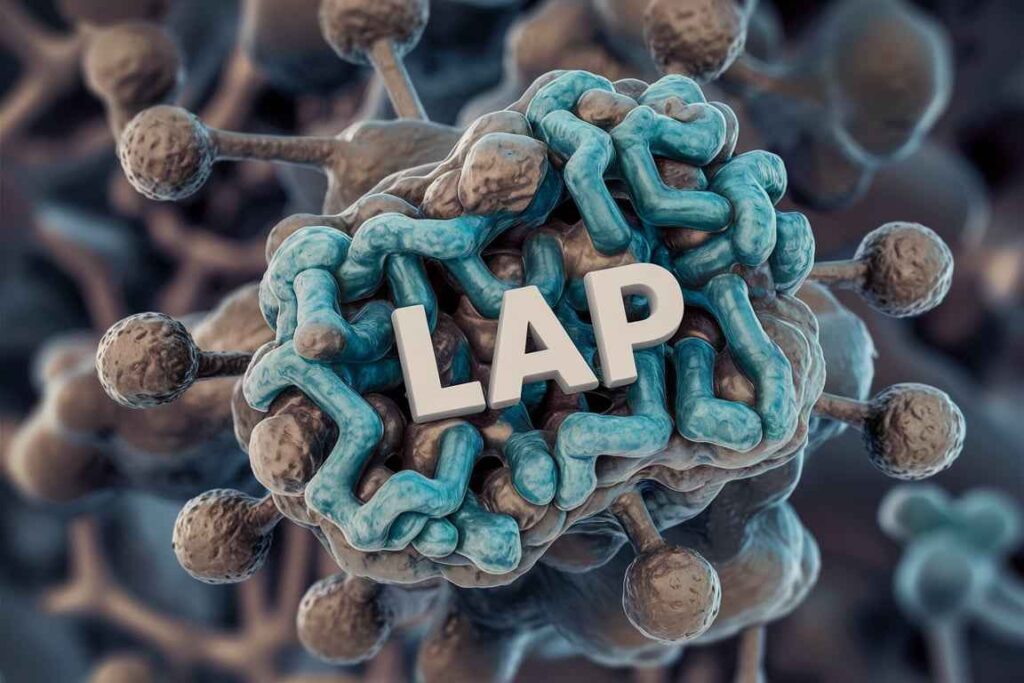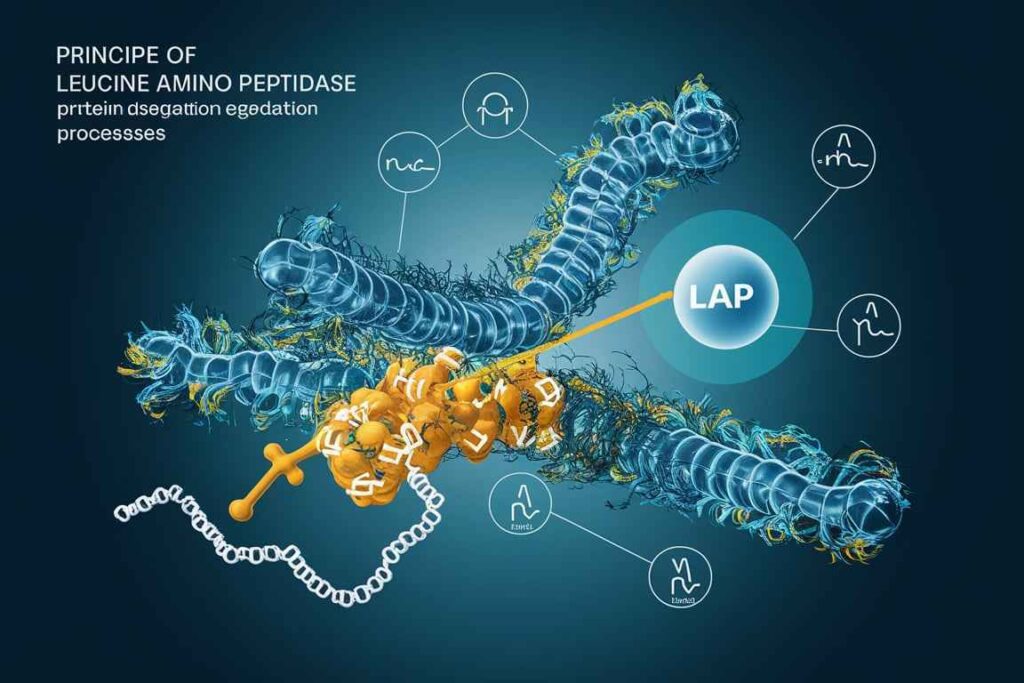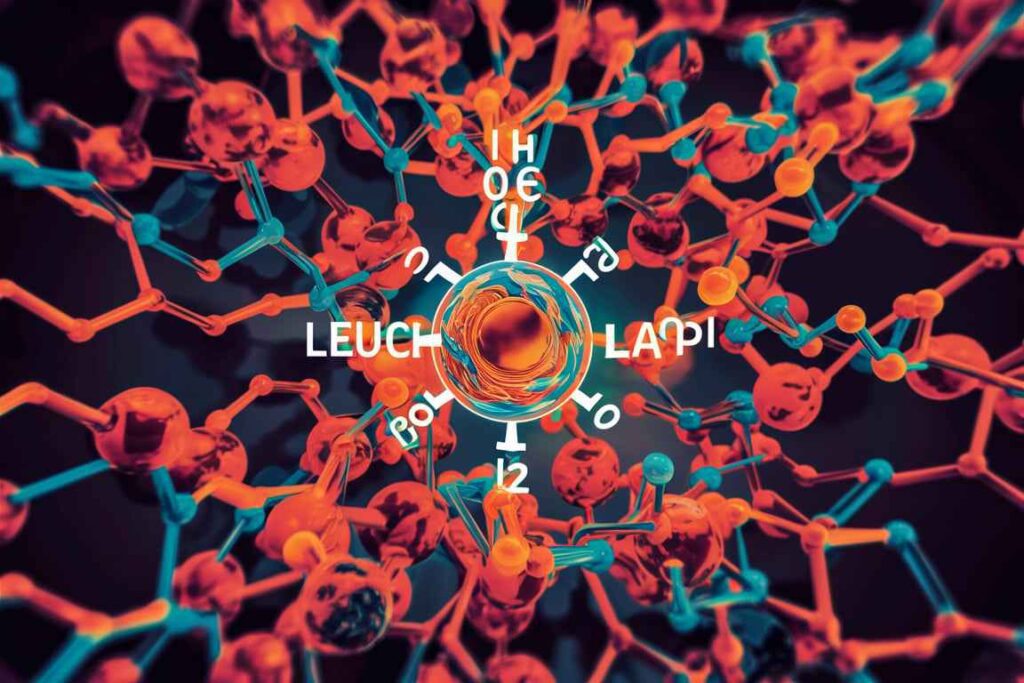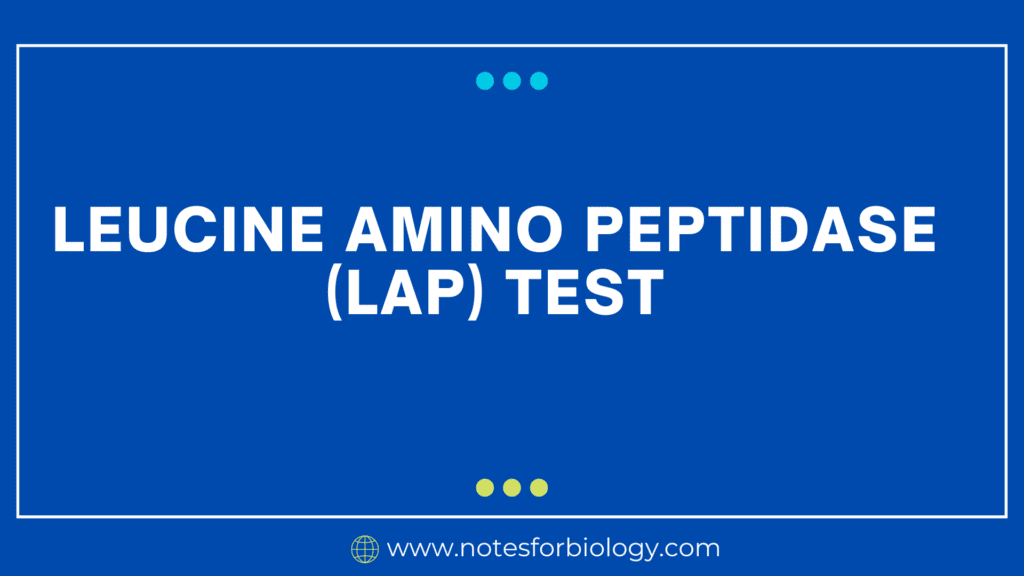Leucine Aminopeptidase (LAP) test is a blood test that measures the amount of the enzyme leucine aminopeptidase in your blood. Leucine aminopeptidase is an enzyme found in the cells of your liver, bile ducts, intestines, and white blood cells.
Table of Contents
Leucine Amino Peptidase (LAP)
Leucine aminopeptidase (LAP) is an enzyme that degrades leucine-containing peptides, releasing free leucine and other amino acids. LAP is an enzyme that plays a crucial role in many biological processes and may be found in a variety of organisms such as bacteria, plants, and mammals.

The Leucine Aminopeptidase (LAP) test is a biochemical technique used to identify the enzyme leucine aminopeptidase in bacterial cells. This test is highly useful for distinguishing specific species of gram-positive cocci, particularly enterococci from other streptococci.
Principle of Leucine Amino Peptidase (LAP) test
The LAP test uses the enzyme leucine aminopeptidase to hydrolyze the substrate leucine-β-naphthylamide. When hydrolyzed, this substrate produces β-naphthylamine, which combines with a colour developer to create a red colour. The development of the red colour signifies a positive outcome, confirming the presence of the enzyme.

Requirements of Leucine Amino Peptidase (LAP) test
- LAP discs and strips contain the substrate leucine-β-naphthylamide.
- Sterile water or saline: To wet the disc or strip.
- To transmit bacterial colonies, use an inoculation loop or wooden applicator sticks.
- LAP reagent (colour developer): Typically, p-dimethylaminocinnamaldehyde.
- Control organisms: Known positive and negative controls are used to validate the test results.

Procedure of Leucine Amino Peptidase (LAP) test
Preparation:
Place the LAP disc or strip on a clean, dry surface.
Moisten the disc or strip with a drop of sterile water or saline. Prevent oversaturation.
Inoculation:
Using a sterile inoculating loop or wooden applicator stick, choose a little amount of the test organism from a pure culture.
Rub the organism onto the surface of the wet LAP disc or strip to ensure good contact.
Incubation:
Allow the infected disc or strip to remain at room temperature for 5-10 minutes to promote enzyme activity.
Development:
Apply one or two drops of the LAP reagent (p-dimethylaminocinnamaldehyde) on the disc or strip.
Observation:
Check the disc or strip for the appearance of a red colour within a few minutes (typically 1-2 minutes).
Results:
Positive
The appearance of a vivid red hue on the disk or strip within 1-2 minutes suggests the presence of leucine aminopeptidase.
Positive creatures include:
Enterococcus spp.
Streptococcus bovis group.
Negative result:
The lack of leucine aminopeptidase is shown by either no color change or a distinct hue (e.g., yellow) on the disk or strip.
Negative creatures include:
- Streptococcus Pyogenes (Group A Streptococcus)
- Streptococcus agalactiae (group B Streptococcus)
Quality Control
To ensure accuracy and dependability, control organisms should be run alongside test samples.
Positive control: An LAP-positive organism, such as Enterococcus faecalis. This control should create the color red.
Streptococcus agalactiae, a well-known LAP-negative bacterium, serves as a negative control. This control should not produce any red color.
Interpretation
Positive LAP test:
It indicates the existence of the leucine aminopeptidase enzyme.
Confirms organisms such as Enterococcus spp. and the Streptococcus bovis group.
Negative LAP test:
This indicates the absence of the leucine aminopeptidase enzyme.
Suggests Streptococcus pyogenes and Streptococcus agalactiae.
Frequently Asked Question
What is Leucine Amino Peptidase (LAP) ?
Leucine aminopeptidase (LAP) is an enzyme that degrades leucine-containing peptides, releasing free leucine and other amino acids. LAP is an enzyme that plays a crucial role in many biological processes and may be found in a variety of organisms such as bacteria, plants, and mammals.
What is the function of leucine aminopeptidase?
Leucine aminopeptidase (LAP) is an enzyme involved in protein metabolism. It is involved in several physiological processes and is found in a wide range of organisms, including as bacteria, plants, and mammals.
What is lap in microbiology?
In microbiology, LAP stands for the Leucine Aminopeptidase test, which detects the presence of the enzyme leucine aminopeptidase in bacterial species. This test is very useful for detecting and distinguishing certain species of gram-positive cocci, such as enterococci and some streptococci.
Related Article
Tinea pedis: etiology, clinical manifestation, diagnosis and treatment




